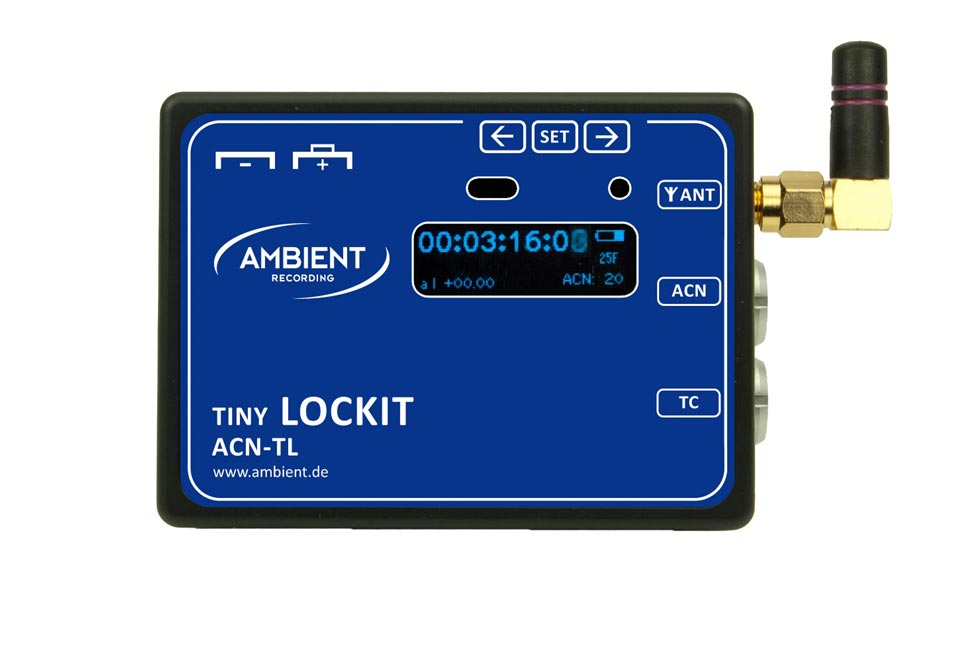

making the unit compatible with all other ACN Lockit devices. There are many commonly used cameras that can be Genlocked, with some requiring additional accessories to take Genlock and timecode. The NanoLockit lets you generate timecode at all framerates using the built-in Real Time. Ambient offers a similar solution with their Lockit boxes and ACN Network. Each camera gets an UltraSync One that outputs timecode and Genlock keeps the camera perfectly in sync with everything else on set. The Timecode Systems UltraSync Ones get rejammed twice per second via 865 MHz to 923 MHz Worldwide ISM bands. Using the 664 and an additional 9 pin Lemo to USB data cable, I am able to control metadata, arm and disarm tracks, start and stop recording, and more on my recorder.
#Timecode lockit generator
This acts as a generator for word clock and Genlock and is slaved to the production sound recorders, something like a Sound Devices 664 that has timecode. The cameras need to be fed timecode and Genlock, and the audio recorder needs timecode and word clock.Īs per the recommendation from Thom Shafer, I use Timecode Systems' :Wave Master Clock. In order to keep every device in sync, you need to have everything clocked by one central master clock. Timecode Systems: Wave Master Clock for timecode, word clock, & Genlock generator connected to Sound Devices 664 Keeping Your Set in Sync with Timecode, Genlock, and Word Clock Since Genlock clocks the capturing of frames on a camera, it can be used to keep the picture from drifting from the audio over time. This is especially important for 3D two camera rigs. In the HD world, Genlock is still hanging around, but these days it uses a protocol called Tri-Level Sync to clock both the frame rate and line rate. Today, most switchers can compensate for this rather than feeding black burst to every source from a central clock.

Genlock was used to keep cameras and other video sources’ frames in sync to avoid nasty artifacts introduced when switching from one source to another. Genlock (which is short for generator locking) originated in the early days of broadcast and video switching systems.

This can cause endless headaches in post when you match the audio and video with timecode, and by the end of the clip, the video is noticeably out of sync with the audio.
#Timecode lockit tv
This is especially problematic for productions that require a long roll time (30 minutes plus), such as reality TV or event coverage. The problem you get here is the camera clock is not calibrated to the external sound recorder’s clock, and slowly they will drift apart as you continue to record. Once a camera starts recording, it ignores external timecode and uses its own internal clock to record. Timecode is in fact only metadata to identify how the first frame is labeled for time when the camera begins rolling. Timecode and sync are not the same things. The common assumption is that by feeding timecode to a camera you will keep picture and sound in sync. I am evaluating several projects.Is timecode the most important thing to sync picture with sound? Let's explain why it may not be. I was eventually able to generate midi clock and start and stop it with jltctrigger via a program called jack_midi_clock - deeper into Linux audio then I intended to go but it works.Īt this point, I'd like to move into some hardware that supports OSC and midi such as the Monome Norns. Midi is trickier, since my hardware sequencers require a continuous midi clock when slaved to set BPM - unlike many DAW's, my sequencers do not support MTC/MMC. good enough for short sample playback as some stuff I use supports OSC. I was successful, finding a program called jltctrigger - executes commands on timestamps - and the "open sound control" (OSC) udp protocol.
#Timecode lockit how to
I ended up having to do some proof of concept stuff in Linux before buying gear, to think thru how to achieve my objectives - skipping overdubs for my live performances and instead having start/stop on my samplers and sequencers synced on LTC for a "one take" result. I looked a lot at the hardware options, MOTU and the 80's retro units from Europe.


 0 kommentar(er)
0 kommentar(er)
